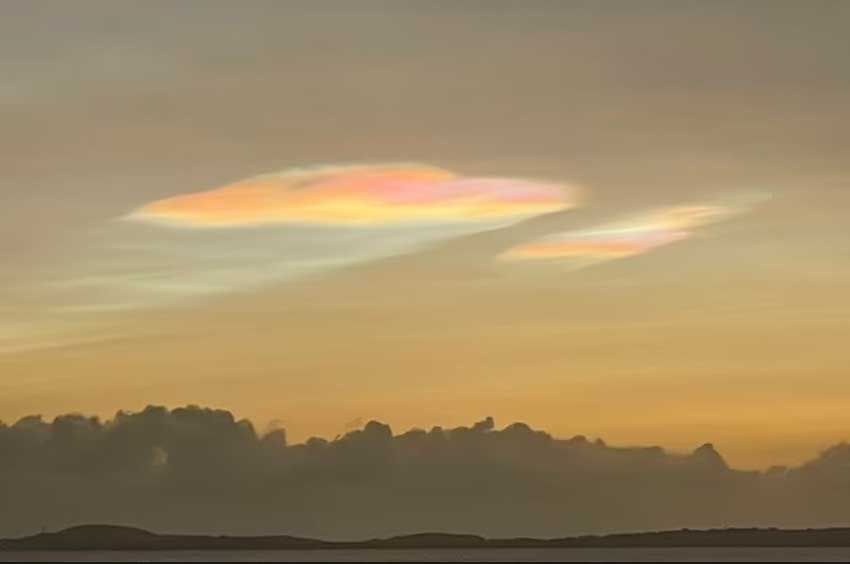loading…
The mesmerizing sight of the emergence of beautifully colored nacreous clouds looms over the skies of Aberdeenshire, Highlands and Moray, in Scotland. Photo/Daily Mail/Twitter
Nacreous clouds are most often seen over Antarctica, only occasionally seen over the Arctic, Scotland, Scandinavia, Alaska, Canada and Russia. Nacreous clouds in the form of large thin discs are usually visible when the sun is directly below the horizon.
“Absolutely fantastic nacreous cloud caught at sunset tonight with some seagulls flying above. What a fantastic sight to behold,” said a BBC Weather Observer quoted from the Daily Mail page, Tuesday (31/1/2023).
Also read; The phenomenon of pillars of light appears in the US, such as traces of UFO planes
Due to their rare and unusual appearance, nacreous clouds are often mistaken by some for the aurora borealis, and some even compare them to UFOs. Officially known as nacreous clouds as polar stratospheric clouds, these formations are unique in that they form higher in the sky than normal clouds and in colder conditions.
“Nacreous clouds will only form when temperatures in the stratosphere are below a cold -78°C or -108°F, thus turning water vapor in the air into very cold liquid or ice crystals,” said Nathan Case, aerospace and physicist with the Department of Energy and Mineral Resources. Lancaster University Physics.
The ice particles that make up nacreous clouds are much smaller than those that make up regular clouds. These smaller particles scatter light in a different way, which creates a distinctive glowing appearance.
They look like stunning Impressionist masterpieces against the sky in beautiful colors. This is because the clouds are exposed to the sun from below at sunset and before sunrise, giving them a vibrant pearl-like color.
Also read; Unique Natural Phenomenon, Green Aurora Illuminates the Sky of Iceland
However, apart from being beautiful, nacreous clouds are destructive and a major contributing factor in the formation of holes in the ozone layer. The ozone layer, which is also in the stratosphere, is a thin region that absorbs almost all of the sun’s harmful ultraviolet rays.
(wib)


